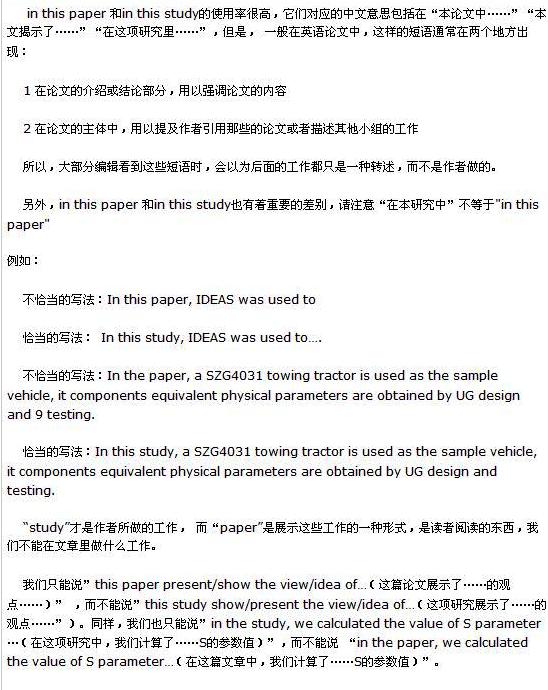在网上搜到的一份资料,觉得很有参考意义,和大家分享一下。这个 In this paper 我们经常用到,但原来其实多数都是用错了的,应该用 In this study 来表述。简要地说,In this paper 是表明论文阐述了什么观点,而 In this study 则是表述在研究中做了什么工作、获得什么成果。所以多数情况下是用 In this study 的,以后写论文要注意了。

在网上搜到的一份资料,觉得很有参考意义,和大家分享一下。这个 In this paper 我们经常用到,但原来其实多数都是用错了的,应该用 In this study 来表述。简要地说,In this paper 是表明论文阐述了什么观点,而 In this study 则是表述在研究中做了什么工作、获得什么成果。所以多数情况下是用 In this study 的,以后写论文要注意了。

 3651
3651
 2515
2515











 被折叠的 条评论
为什么被折叠?
被折叠的 条评论
为什么被折叠?


